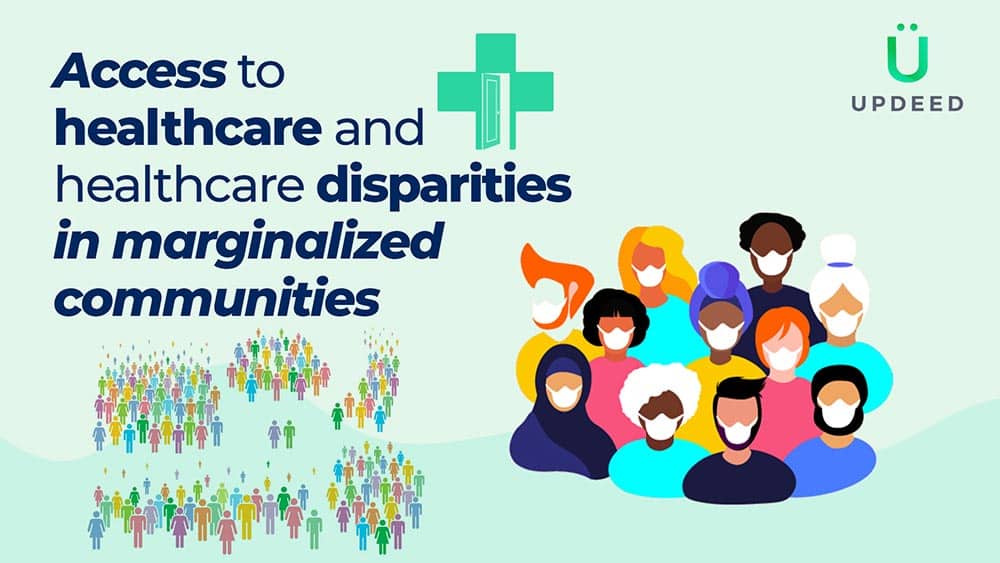Access to Healthcare and Healthcare Disparities in Marginalised Communities
Access to healthcare is a fundamental human right, but unfortunately, it is not equally accessible to everyone. Healthcare disparities have been a persistent problem in marginalised communities, significantly impacting the health outcomes of those most vulnerable.
According to the World Health Organization (WHO), more than 50% of the world’s population without access to essential health services lived in the Southeast Asia and Western Pacific regions.
Marginalised communities include low-income populations, racial and ethnic minorities, people with disabilities, LGBTQ+ people, and others who face barriers to accessing healthcare.

Healthcare Disparities in Marginalised Communities
Healthcare disparities refer to differences in health outcomes and access to healthcare services among different populations. These disparities are often driven by social, economic, and environmental factors that create barriers to healthcare access. Some examples of healthcare disparities that exist in marginalised communities include:
Access to healthcare services: Marginalized communities often lack access to healthcare services due to geographic, financial, and language barriers. Many low-income and minority communities are located in areas with a shortage of healthcare providers, making it difficult for them to access care. In addition, language barriers can make it difficult for non-English speaking patients to communicate with their healthcare providers, leading to a lack of understanding of their health conditions and treatments.
Quality of care: Even when marginalised communities have access to healthcare services, their care may be subpar. Studies have shown that minority patients are less likely to receive preventive care services and screenings, such as mammograms and colonoscopies than their white counterparts. In addition, they are more likely to experience medical errors and misdiagnoses, which can lead to poorer health outcomes.
Health outcomes: Marginalised communities often experience worse health outcomes than the general population. For example, African Americans and Hispanics have higher rates of diabetes, obesity, and heart disease than white Americans. They are also more likely to die from these diseases. In addition, LGBTQ+ individuals are at higher risk for mental health issues such as depression and suicide.
Factors behind healthcare disparities
Several factors contribute to healthcare disparities in marginalised communities. Firstly, low-income communities often lack access to healthcare services due to financial barriers. They may be unable to afford health insurance or the co-payments associated with medical care.
Secondly, racism and discrimination within the healthcare system can contribute to healthcare disparities in marginalised communities. Minority patients may experience bias and discrimination from healthcare providers, leading to a lack of trust in the healthcare system and avoidance of medical care.
Similarly, a lack of diversity in the healthcare workforce can contribute to healthcare disparities in marginalised communities. Patients may feel more comfortable receiving care from healthcare providers who share their language, culture, and background. Further, language barriers can make it difficult for non-English speaking patients to communicate with their healthcare providers, leading to a lack of understanding of their health conditions and treatments.
Potential Solutions
Some of the potential solutions to healthcare disparities in marginalised communities:
- Increase access to healthcare services: This can be done by expanding insurance coverage, increasing funding for community health clinics, and providing more transportation options to medical appointments.
- Improve health literacy: Educating marginalised communities on navigating the healthcare system and accessing preventive services can help improve health outcomes.
- Address social determinants of health: Addressing issues such as poverty, lack of affordable housing, and food insecurity can improve the overall health of marginalised communities.
- Increase diversity in healthcare: Recruiting and training healthcare professionals from diverse backgrounds can help improve cultural competency and reduce healthcare disparities.
Further, collaboration with community-based organisations and promoting culturally appropriate care can help build trust and increase healthcare utilisation in marginalised communities. These solutions, among others, can help address healthcare disparities in marginalised communities and improve health outcomes for all.
Ready to make a positive impact in the world?
UPDEED is the place for you. Our free and open platform is filled with inspiring stories from individuals and organizations who are making a difference in their communities and beyond. Connect and collaborate with like-minded individuals from around the globe on UPDEED, and discover your own potential to create meaningful change. Join our community and make a difference.





